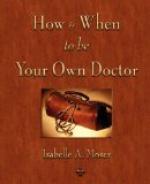There are other attitudes associated with weight loss that make it difficult for people to fast. People hold rather stereotypical notions about what constitutes an attractive person; usually it involves having some meat on ones bones. Hollywood and Hugh Hefner have both influenced the masses to think that women should have hourglass figures with large, upthrust, firm breasts. Since breasts are almost all useless fatty tissue supporting some milk-producing glands that do not give a breast much volume except when engorged, most women fasters loose a good percentage of their breast mass. If the fast is extensive, there should also develop an impressive showing of ribs and hip bones; these are not soft and cuddly. Husbands, lovers, parents, and friends frequently point out that you don’t look good this way and exhort you to put on weight. Most people think pleasantly plump is healthy.
Skinny men, especially those who had lost a lot of weight during an illness, are pressured by associates to put on weight to prove that they are healthy. I had a client who was formerly a college varsity football player. Before his illness he had lifted weights and looked like a hunk. His family and friends liked to see him that way and justifiably so. Then he got seriously ill. On a long extended healing diet he lost a significant amount of weight and seemed down right skinny, causing all who knew him well and cared about him to tempt him with all kinds of scrumptious delicacies from the best of kitchens. But this case was like Luigi Cornaro, a man who never again could look like a hunk. His “friends” made an absolutely necessary change in life style and appearance far more difficult than it was already. My client was torn between a desire to please others, and a desire to regain and retain his health. This problem a sick person doesn’t need.
If you have the independence to consider following an alternative medical program in a culture that highly values conformity and agreement, you are also going to have to defend your own course of self-determined action based on the best available data that you have. But fasters are usually in fragile emotional condition, so I advise my clients who are subjected to this kind of pressure to beg their friends and associates to refrain from saying anything if they can’t support the course of action you have chosen. After this, if friends or relatives are still incapable of saying nothing (even non-verbally), it is important to exclude them from your life until you have accomplished your health goals, have regained some weight and have returned to eating a maintenance diet, rather than getting skinnier on a healing one.
The very worst aspect of our culture’s eating programming is that people have been wrongfully taught that when ill they must eat to keep up their strength. Inherent in this recommendation is an unstated belief that when the body is weakened by a disease state, the weakness can somehow be overcome with food, and that the body needs this food to kill the virus, bacteria, or invading yeast, and uses the protein to heal or rebuild tissue. Sadly, the exact opposite is the case. Disease organisms feed and multiply on the toxic waste products of misdigestion, and the body is unable to digest well when it is weak or ill.




